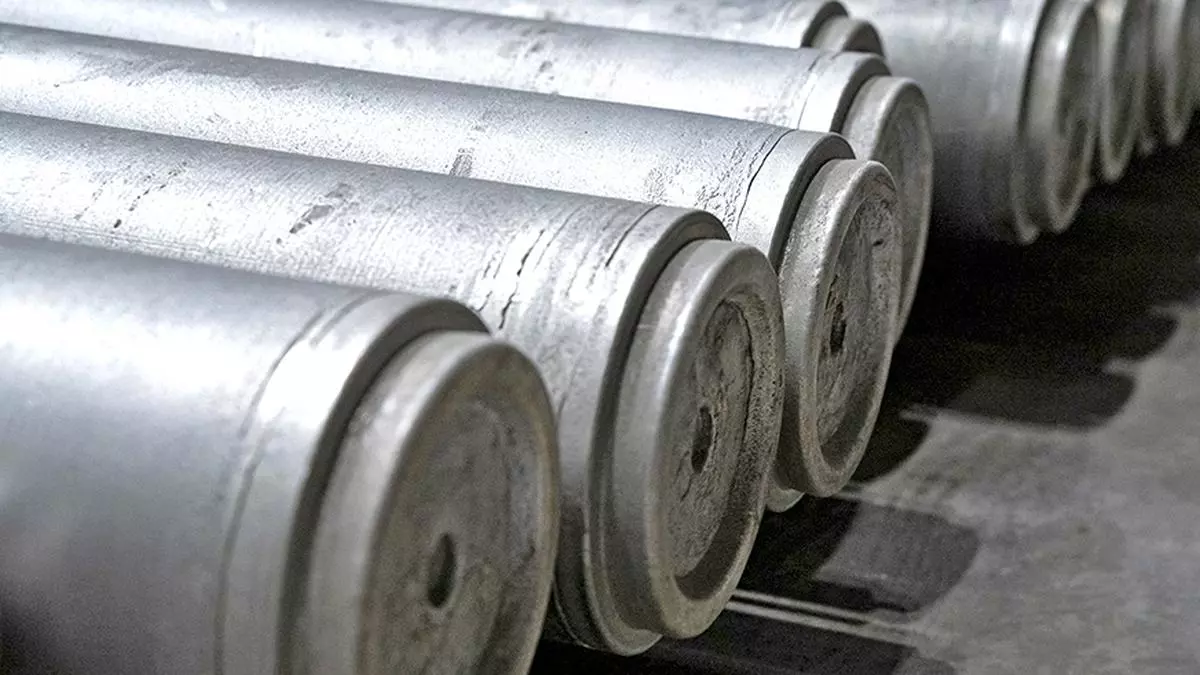A tiny asteroid loitering in a near-Earth orbit for a few months last year may have an intriguing origin on our Moon. Its characteristics led scientists to ask: is it a chip off the old lunar block, making a pass by Earth for a visit?
The object is known as Near-Earth Asteroid (NEA) 2024 PT5 (or PT5, for short) and its orbit is very similar to Earth’s. Oddly enough, that region often gets littered with rocket bodies. Interestingly, it’s also a region where debris blasted off the Moon during impacts tends to collect. So, could PT5 have come from the Moon? There’s a good chance that it did but how do we know this?

Planetary scientists have long studied Near-Earth objects (NEOs) and NEAs to understand their origins. One way to do that is to determine a relationship between their current orbits, properties, and sources, One such origin is the Main Asteroid Belt, but it’s not the only place where asteroids emerge. Each object is a special case, and scientists compare them with known meteorites. Of course, you need some data about the object’s physical characteristics—including its reflectance and albedo. Those two properties can often tell you what part of an asteroid population the object came from. They’re particularly important if there are no physical samples available for analysis.
Looking at Spectra of the Suspected Moon Chunk
A team of observers used the Lowell Discovery Telescope in Flagstaff, Arizona, to take reflectance spectra of PT5. This 10-meter-wide chunk of space rock was first discovered in August of 2024 by a survey project in South Africa. Its orbit made it a perfect target for another survey called MANOS (Mission Accessible Near-Earth Object Survey). The Lowell observations took place a week later to determine reflectance properties. Those are useful to figure out its origin—either natural or artificial. Subsequent observations of the object characterized its rotation and revealed it has a rocky, silicate-rich composition. That ruled out an artificial origin.
The reflectance spectrum from the Lowell telescope does give a match to known lunar samples. PT5 does not match any known asteroid types, however. For example, it looks to be pyroxene-rich, which indicates the rock came from an igneous or possibly metamorphic environment. Other asteroids aren’t the same—they tend to be richer in olivine. Based on that data and its tumbling motion, scientists conclude that it is ejecta from an impact on the Moon. If that’s the case, it’s only the second time a NEA has been found that came from the Moon.

If only one existed, we could say it’s a space oddity. However, the presence of two such objects changes the story. It also suggests that there’s a whole population out there waiting to be observed.
What PT5 Means
So, let’s say there is this collection of lunar chunks floating around out there. They can give insight into how impacts affect the Moon or other bodies such as Earth and Mars. They would also help identify the sources of other asteroids and meteorites from this under-studied population of near-Earth objects. In a paper discussing PT5, authors Theodore Kareta of Lowell Observatory, Oscar Fuentes-Munoz from NASA JPL, and others, describe their study of this rock, its orbit, and physical characteristics. They write, “If there really is a population of Moon Rocks out there waiting to be discovered on near-Earth orbits, they almost certainly are rare members of the NEO population.”
There may well be only about 16 currently known NEOs that could have come from the Moon, but there could be more. Now, the challenge is to separate them from the general population of near-Earth objects and subject them to further study. Since the orbits of lunar ejecta pieces tend to evolve into Aten- or Apollo-type orbits, the authors point out there could be between 5 and 10 times more of these lunar chips off the old block in the neighborhood. (Aten asteroids are a group known as “Earth-crossing” asteroids because their orbits cross our planet’s orbit. Apollo asteroids also follow orbits that cross ours.)

Future Observations of Suspected Moon Pieces
If there is a larger population of lunar-sourced asteroids in near-Earth-type orbits, then the next step is to figure out ways to find them. Certainly, asteroid surveys will help, along with further observations of their reflectance and charts of their orbits. Since these asteroids are generally thought to be relatively small, it will take a new generation of larger telescopes and observational techniques to find them.
Probably one of the greatest results of the search for these objects is what they can tell us about impact histories in the inner solar systems. The paper’s authors point this out. “First at Mars and now at the Earth, the impact histories of the terrestrial planets appear to be partially encoded in the asteroids that orbit nearby to them. Future work to discover more of and measure the properties of this population of near-Earth objects which are sourced by the Moon will be critical to link asteroid and lunar science in the era of Artemis and the Vera Rubin Observatory’s LSST.”
The next chance to observe PT5 is coming up this month when it lingers near Earth again. NASA has plans to track it with radar and undoubtedly others will be studying it to understand more about this “mini-Moon”.
For More Information
On The Lunar Origin of Near-Earth Asteroid 2024 PT5
NASA to Track Asteroid 2024 PT5 on Next Close Pass, January 2025









Leave a Comment